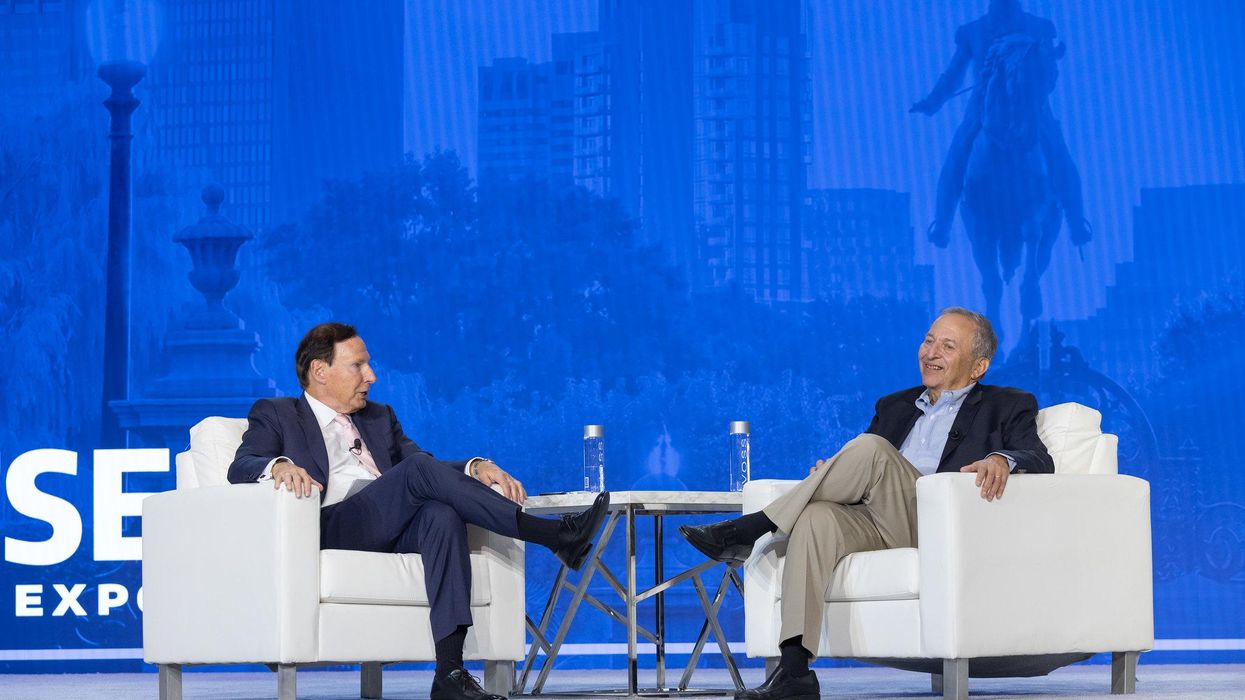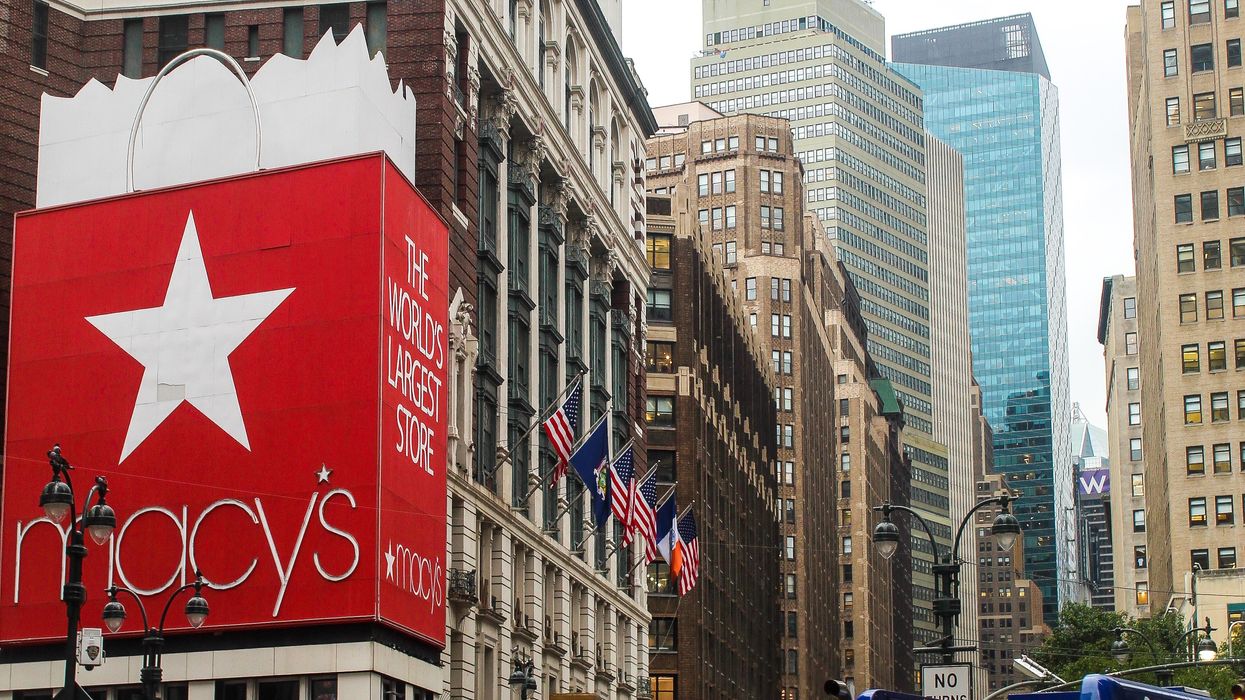The American economy is likely to enter a recession “sometime within the next two years" as the Federal Reserve fights inflation.
That’s the outlook from Larry Summers, a Harvard economist with the ear of policymakers who served as US treasury secretary in the Clinton administration and director of the National Economic Council during the Obama administration.
Speaking at the National Association of Chain Drug Stores Total Store Expo in Boston, Summers said that bringing down inflation will require slowing down the economy to the point that the US enters a recession.
“I don’t think that recession has already started. I don’t think it is in immediate prospect. But if we are going to contain inflation I have to record that I think it is likely,” Summer said.
Summers’ analysis comes as the economy deals with a bout of 40-year-high inflation following the worst of the COVID-19 pandemic. Central bankers are aiming to bring prices under control, but businesses are looking for signs of whether this will bring a downturn in the process. Many have hoped for a “soft landing” that brings only a moderate slowdown in growth, however, Summers does not believe this is in the cards.
“Economic history teaches that soft landings are like what George Bernard Shaw said of second marriage: A triumph of hope over experience,” Summers said. “The prospect that we will successfully bring this economy down in a way that will not involve a recession is not inconceivable, but I think it is odds off.”
Mistakes were made
Outlining what he called “mistakes” of the last two years, Summers laid out the case that has made him one of the most noted critics of the economic actions taken by US leaders as they sought to steer a recovery from COVID-19 at the tenuous time that preceded widespread vaccination.
Summers allowed that the initial economic response to COVID-19 in 2020 was the right one, as the federal government extended relief funds to businesses and individuals in the face of the massive downturn resulting from health restrictions, and the layoffs and pullback in spending that resulted.
“It was right to think that the risks were of not doing enough to support the economy after COVID, rather than doing too much to support the economy after COVID. That was right, but we stayed at it as a country for too long,” said Summers.
The 2021 stimulus arrived when the economy was “well on the road to recovery,” Summers said. The $2.8 trillion total of the relief packages was five times the size of the output gap recorded in 2009 at the outset of the Great Recession.
“Yes, we should have done more after the financial crisis, but no one thought we should have done five times as much,” he said.
Combine that with accumulated savings as a result of restrictions on in-person activities and the Federal Reserve holding interest rates low. “With all that flow of demand it was inevitable that the bathtub would overflow,” Summers said. The result was more money chasing goods than items available, labor shortages and a shock to supply chains. The mismatch of supply and demand led inflation to spike.
Taking the medicine
While Summers allowed that it remains a period of “enormous uncertainty,” his remarks about a recession come as central bank leaders appear to be preparing the public to batten down the hatches. In a Friday speech from Jackson Hole, Wyoming, Federal Reserve Chairman Jerome Powell warned of “some pain” ahead for households and businesses as back-to-back interest rate increases move through the economy, and more are likely to follow.
The word that is doing a lot of work there for economists is "some," as the big question lies in how much pain will ultimately be necessary.
After digging into the data and talking with leaders, Summers is not optimistic. The latest reading of the Consumer Price Index from July showed inflation at 8.5%. The Federal Reserve’s goal is to bring that back down to 2%. Summers believes that the inflation volatile CPI categories such as gasoline, food and used car prices will moderate, lowering the inflation rate somewhat in the short-term. However, he believes there is an underlying inflation of 5-6% – still well above the 2% goal.
The actions required to remove that other 3% of inflation is what will raise the unemployment rate, and slow growth. Factoring in the pandemic-era labor market phenomena of Great Resignation, a rise in vacancies and quiet quitting, Summers believes a “sustained stretch above 6% unemployment” is likely necessary to bring inflation down – well above the current 3.5%.
“I don’t think it’s realistic to think that we can keep the economy growing all the way through that, just at a slower rate, but anything is possible,” he said.
This could set up a period where actions taken by policymakers appear to run counter to encouraging a healthy economy. As interest rates continue to rise, data on unemployment and growth will likely go in the wrong direction. The Fed may get signals from businesses, the public and even other leaders that it should stop raising rates, but Summers said it must continue the hikes in the face of this, until inflation is back down around 2%. On this point, he echoed Powell, who said on Friday of reducing inflation that, “We must keep at it until the job is done.”
To explain what is necessary, Summers offered an analogy that was apt for a group of pharmacy leaders.
“When you are prescribed a course of antibiotics, it is important that you take the full course of antibiotics and that you don’t stop taking the drugs the moment you feel better,” he said.
That doesn't mean following the course is easy. Avoiding a more prolonged period of economic pain will take “will and fortitude” on the part of the Fed, Summers said. As with a shot, short-term soreness prevents long-term illness. The public must look away from the needle, and let the Fed administer the shot.
“Ironically, the greater is our determination to accept pain, the lesser is the pain that we will ultimately have to accept,” Summers said.










